The only way Israelis can be made to sit up and take note of the disaster unfolding next door in Gaza, it seems, is when they fear the fallout may spill out of the tiny coastal enclave and engulf them too. Environmental experts from two Israeli universities issued a report in June warning that the imminent collapse of Gaza’s water, sewage and electricity infrastructure would soon rebound on Israel.
Gideon Bromberg, the Israeli director of EcoPeace Middle East, which commissioned the report, told journalists:
“Without urgent, vigorous action, plagues and infections will break out that could cost a great many lives, both in Israel and in Gaza, and no fence or Iron Dome [Israel’s missile interception system] can thwart them.”
Israel’s liberal Haaretz newspaper paraphrased another of Bromberg’s comments:
“If something isn’t done, the upshot could be political horror in the form of hundreds of thousands of Gazans fleeing for their lives toward Israel – for fear of catching disease.”
Bromberg and others on Israel’s left are well aware that Gaza’s 2 million Palestinians were long ago dehumanized in the eyes of most Israeli Jews, who think of them as nothing more than terrorists or terrorist sympathizers who deserve their sorry fate. Stories of Gaza’s endless suffering a short distance from Israelis’ homes are unlikely to shame them into action. They can be roused only out of self-interest – a fear for their own safety and the wellbeing of their loved ones.
Gaza’s problems, however – the fact that it is one of the most densely populated, poorest and polluted places on the planet – are not an accident, or the consequences of some natural cataclysm. The crisis there is entirely man-made – and one that has been engineered over decades by Israel.
Israel effectively treated the Strip as a dumping ground – a holding pen – for the mass of refugees it created by dispossessing the Palestinians of their homeland in 1948. Nearly three-quarters of Gaza’s inhabitants are descended from the refugees of that war, Palestinians who were forced off their lands in what is now Israel and denied the right ever to return to their homes.
Having exiled them, Israel was nonetheless prepared to use the Palestinians of Gaza as a cheap labor force – for a time. It was possible until the 1990s to exit Gaza relatively easily to work in Israel’s dirtiest and lowest-paying jobs. But as the occupation entrenched, Israel was forced into a rethink by two developments.
Israel was forced into a rethink by two developments.

First, Palestinians under occupation, including in Gaza, launched a lengthy campaign of mass civil disobedience against their occupiers in the late 1980s, known as the first intifada, that included general strikes, a refusal to pay taxes, boycotts of Israeli goods and stone-throwing. And second, Gaza’s population has grown exponentially, at a pace that outstripped the capacity of this tiny territory – measuring just 25 miles in length and some 5 miles across – to accommodate them.
In response, Israeli leaders pushed for a more clear-cut physical separation from Gaza. The rallying cry of politicians of the time was: “Us here, them over there.”
Israel’s out of sight, out of mind approach was soon given diplomatic sanction in the Oslo Accords of the mid-1990s. Israel surrounded Gaza with high-security fences and armed watchtowers, established an exclusion zone along its sea coast, and revoked the general exit policy.
Ariel Sharon’s disengagement of 2005, when the last remaining Jewish settlers were pulled out of the enclave, marked the completion of Israel’s separation policy. The occupation did not end, however. Israel still controlled Gaza’s airspace, its land perimeters and coastal waters. Israel soon imposed a blockade, preventing goods as well as people from entering or leaving, a blockade it tightened dramatically when the Palestinian faction Hamas won elections in the occupied territories in 2006.
Since then, Israel has transformed the holding center into a super-max prison. This year it finished a submarine barrier with sophisticated sensor systems along the coast. Israel is currently enlarging the perimeter fence to make it 20 feet high and fortifying it with remotely controlled gun towers, while all-seeing drones patrol the skies above Gaza.
The first dire warning about conditions in Gaza was issued in 2015, a year after Israel’s massive attack on the enclave known as Protective Edge, in which more than 2,200 Palestinians were killed, including over 550 children, and 17,000 families left homeless. A report by the United Nations Conference on Trade and Development (UNCTAD) argued that Gaza would be “uninhabitable” by 2020 if the trends then current continued. None of those trends has been halted or reversed. Which means Gaza is about to slide into a fully fledged humanitarian catastrophe entirely created by Israel, and implicitly supported by the silence and inaction of western states.
But while Israel has managed to keep the Palestinian inhabitants of Gaza cooped up like underfed and abused battery chickens, it is starting to find it is much harder to contain the various crises – social, economic, political and humanitarian – unfolding in the enclave. Slowly Israel is waking up to the fact that Palestinians don’t behave like chickens.
Rockets, Kites, and Marches
Inevitably Gaza’s inhabitants have reacted to Israel slowly tightening its chokehold on their enclave. But by the time of the Palestinians’ second uprising, which began in late 2000, the kind of mass civil disobedience of the first intifada was no longer possible. By then, Gaza’s population was imprisoned behind a fence. The factions, especially Hamas, instead tried to break free of their confinement by launching primitive Qassam rockets into Israel.
Largely ineffective as a weapon of death or destruction, the rockets have nonetheless spread fear in Israeli communities close to the enclave. But their use has had mostly negative repercussions for Gaza. Israel responded with extra-judicial executions of Palestinian leaders in Gaza that typically killed many more bystanders, and used the rockets to justify ever-more severe forms of collective punishment that culminated in the blockade. What little western sympathy there had been for Gaza drained away as Israel, assisted by the western media, edited out the context for the rockets – Gaza’s imprisonment by its occupier – and presented a simplistic, ahistorical narrative of terror attacks on innocent Israelis driven, it was implied, only by the Jew hatred of Islamic extremists.
While popular support in Gaza for the rocket attacks has ebbed over time, Palestinians there have learned the hard way that they cannot afford passivity. As soon as the rockets fall silent, Israel and the world forget about Gaza. The west’s hypocrisy has been plain: it condemns the inhabitants of Gaza for struggling against their imprisonment by firing rockets, but then ignores their plight when they play according to diplomatic rules.
Over the past year and a half, the rockets have been largely replaced by a couple of popular initiatives that were launched with two aims in mind: to make Gaza’s suffering visible again, and to challenge Israeli and western prejudices about the enclave. Both initiatives mark a return to the type of mass civil disobedience exemplified by the first intifada, but recast for an era in which the Palestinians of Gaza have limited opportunities to confront their oppressor directly.
The first are incendiary kites and balloons – Israel inevitably adds the label “terror” to these balloons and kites – sent over the perimeter fence to set fire to the agricultural lands of the Israeli communities that prosper close by at Gaza’s expense. The damage caused to Israel’s local economy is intended to serve as a pale mirror of the massive economic destruction Israel has inflicted on Gaza’s economy over many decades, including, as we shall see, to its farmland. The balloons are a way, like the rockets, to remind Israelis that Palestinians are suffering out of sight, on the other side of the fence, but do so without risking the civilian deaths entailed by the rockets’ use.
The second popular initiative has been a weekly mass, largely non-violent protest, called the Great March of Return, close to the perimeter fence. The title is meant to remind observers that most Palestinians in Gaza are denied the right to return to the hundreds of villages their families were expelled from by Israel in 1948 and that are now located on the other side of the fence. Tens of thousands of marchers regularly defy Israeli restrictions that have declared hundreds of meters of Gaza’s land inside the fence as a “no-go zone.”

The protesters’ goal is to ensure that Israel and the west cannot overlook Gaza’s suffering and desperation, or shirk their responsibility for the catastrophe unfolding there, or continue to erase the deeper historical injustice caused by Israel when it dispossessed the Palestinians of their homeland in 1948. The protests are a potent reminder that this crime against the Palestinians has to be addressed before any lasting resolution of the Israeli-Palestinian conflict can occur.
Israeli officials have every reason to want the very opposite for Gaza. They need its suffering overlooked; the Palestinians there mute, or at least violent in ways that Israel can re-characterize as terrorism; and the historical injustices forgotten. They have therefore worked hard to suggest that the protests are not a natural expression of Gaza’s anger, frustration and desperation in the face of a humanitarian catastrophe engineered by Israel, but a new, veiled terror strategy organized by Hamas. The marchers are not civilians, Israel argues, but hardcore Hamas activists who want to destroy Israel.
That has rationalized Israel’s extremely violent response, with snipers using live fire against the protesters. Those shot include large numbers of children, wheelchairs users, as well as paramedics and journalists identifiable by their clothing. Israel has executed more than 200 protesters, nearly a quarter of them children. A further 32,000 have been injured – an average of 500 a week.
One of the investigators in a UN commission of inquiry into Israel’s handling of the protests concluded that its military forces “have intentionally shot children, they’ve intentionally shot people with disabilities, they’ve intentionally shot journalists.” That was confirmed in July when the Israeli media revealed that snipers had been ordered to routinely shoot the protesters in the upper leg, in an apparent effort to deter people from attending. This order continued even when it became clear that a significant proportion of those shot were dying from their wounds or needed a leg amputated. Only very belatedly did commanders order that protesters be shot in the ankle to reduce the number of deaths.
Zionism and the Logic of Settler Colonialism
Israelis’ widespread indifference to the fate of Palestinians, most especially in the case of Gaza, is deeply entangled in the ideology Israel embodies. Zionism is viewed in much of the west simplistically: as purely a salvation movement, one that created a “lifeboat” for Jews – in the shape of Israel – at a time of profound need as the Nazi Holocaust ravaged large parts of European Jewry. But Zionism, in both its Christian and Jewish forms, long predates that genocide. Its roots are to be found in European settler colonial ideologies that emerged from the 17th century onwards.
Settler colonialism is markedly different from traditional colonialism. The latter, illustrated by Britain’s relationship with India, is characterized by colonists arriving in another land to exploit the resources and labor of the native people. Whatever treasure was unearthed in the colonies – rubber, tea, tulips, sugar, diamonds, oil – was shipped back to the motherland, where it helped to support the lavish lifestyles of an elite. Great amounts of violence were needed to force the native population to submit. The colonists also tried to rationalize the resource grab, both to themselves and to the indigenous population, traditionally through religion and ideas of improvement – the “white man’s burden.” Colonists prospered until the native population found a way to expel them.
Settler colonialism, by contrast, has a different rationale – what scholars have termed the “logic of elimination.” Settler societies are not there primarily to exploit the natives, though they may in part do that too for a time. They are there to replace them. And there are three possible routes by which that ambition can be achieved.
The first – what might be termed the Americas model – is to exterminate the natives, to wipe them out so there can be no local challenge to the settler colonial project. The second – what might be called the Israel model – is to ethnically cleanse the natives, to drive them out of the coveted territory to another place. And the third – what might be termed the South Africa model – is resorted to chiefly when it has not been possible to fully realize the first or second models. Apartheid regimes herd the natives out of sight into ghettoes – often called homelands, reservations or, in South Africa’s case, Bantustans – where they can be largely ignored, deprived of their rights and access to resources.
Settler societies can adopt more than one model over time, or they may experiment with different models. In the United States, for example, settlers exterminated much of the Native American population and then drove the remnants into reservations. In South Africa, apartheid also required ethnically cleansing the black population from lands coveted by white settlers.
Israel too has adopted a mixed model. In 1948, and then again in 1967, it carried out mass ethnic cleansing operations. During the 1948 Nakba, literally catastrophe, Zionists expelled more than 80 per cent of Palestinians living inside the borders of what was about to become the Jewish state of Israel. Afterwards, Israel adopted a system of apartheid against the remnants of the native population, first inside its recognized borders (as I outlined in a previous edition of the Link) and later in the occupied territories.
In Israel today, some 93 per cent of territory has been “nationalized” exclusively by the state on behalf of Jewish people around the world, while Palestinian “citizens,” a fifth of Israel’s population, have been penned into little more than 2 per cent of Israeli territory. In the occupied territories, meanwhile, the settlers have directly seized 42 per cent of the West Bank for themselves, while the Israeli government directly controls more than 60 per cent of the territory, what was declared “Area C” in the Oslo Accords.
Israel’s Monstrous Vision
Ethnic cleansing and apartheid have been the mainstays of Israel’s approach to the Palestinians inside Israel, in the West Bank and in East Jerusalem. But over the past 15 years its policy towards Gaza appears to have moved in an additional direction – towards elements of what might be called a model of incremental genocide.
“Genocide” is an emotive term, and one few people wish to use in relation to Israel, given the extermination of many millions of European Jews at the hands of the Nazis. But it is a term that exists outside of, and apart from, the Holocaust. It has a meaning clearly defined in international law, and one that is key to analysing and evaluating political situations and their likely future trajectories. The term was coined precisely to offer tools for early detection so that genocides could be prevented from taking place, not simply labeled once the atrocity was over. To preclude genocide as a possible explanation for Israel’s behavior in Gaza is to prioritize the historic sensitivities of some Jews over the current, urgent and existential threats to a substantial part of the Palestinian people.
The United Nations adopted a Convention on the Prevention and Punishment of the Crime of Genocide in 1948, the year of Israel’s creation. It defined genocide as:
“any of the following acts committed with intent to destroy, in whole or in part, a national, ethnical, racial or religious group, as such:
a) Killing members of the group;
b) Causing serious bodily or mental harm to members of the group;
c) Deliberately inflicting on the group conditions of life calculated to bring about its physical destruction in whole or in part;
d) Imposing measures intended to prevent births within the group;
e) Forcibly transferring children of the group to an other group.”
Genocide is confirmed by only one of these five acts, and there should at least be a suspicion – as we shall see – that Israel is effecting the second and third in Gaza.
Israeli academics too have noted the need for another term – in addition to ethnic cleansing and apartheid – to describe Israel’s policy towards the Palestinians, especially in Gaza. The late Israeli sociologist Baruch Kimmerling, one of the country’s foremost scholars of Israeli and Palestinian nationalism, invented a word – politicide – to avoid the term genocide. In 2003, years before Israel’s blockade and repeated attacks on Gaza had begun, he defined politicide as having two effects:
“The first is the destruction of the Palestinian public sphere, including its leadership and social and material infrastructure. The second effect is to make everyday life for the Palestinians increasingly unbearable by destroying the private sphere and any possibility of normalcy and stability. … All of these conditions are … designed to lower Palestinian expectations, crush their resistance, isolate them, make them submit to any arrangement suggested by the Israelis, and eventually cause their voluntary mass emigration from the land.”
It hardly matters whether we describe the Israeli plan outlined by Kimmerling as incremental genocide or politicide; he accurately presents Israel’s monstrous vision of a half-life for Palestinians in the occupied territories in which they are stripped not only of their rights but also of their humanity. On this view, Palestinians are conceived of not so much as lesser beings but as non-beings whose fate should not trouble us.
Putting Gaza on a Diet
There have been three clear signals from senior Israeli officials of the strategic shift in thinking about Gaza – of how the limits of what is imaginable – have been gradually shifting.
The first was articulated in 2006 by Dov Weissglass, an adviser to the Israeli prime minister of the time, Ehud Olmert. He alluded to Israel’s new approach to Gaza during an interview with the Haaretz newspaper. “It’s like an appointment with a dietician. The Palestinians will get a lot thinner, but won’t die,” he said, referring to Israel’s recent imposition of an economic blockade on Gaza, backed by an aid boycott by western governments. Most observers at the time dismissed his comment as hyperbolic. But later it emerged that Weissglass had actually been describing a policy that was about to be implemented by the Israeli army.
In 2012, after a three-year legal battle by Gisha, an Israeli human rights group, Israel was forced to disclose a document called “Red Lines” that had been drafted in early 2008. At that time, as the blockade was tightened still further, the Israeli defense ministry requested calculations by health officials of the minimum number of calories needed by Gaza’s inhabitants to avoid malnutrition. Those figures were then translated into truckloads of food Israel was supposed to allow in each day at the crossings.
But in practice the military authorities ignored the advice of the government’s own calorie-counters. While the health ministry determined that Gazans needed daily an average of 2,279 calories each to avoid malnutrition – requiring 170 trucks a day – military officials found a host of pretexts to whittle down the trucks to a fraction of the original figure. An average of only 67 trucks – much less than half of the minimum requirement – entered Gaza daily. This compared to more than 400 trucks that had been entering before the blockade began.
Israeli officials had deducted trucks based both on an over-generous assessment of how much food could be grown locally and on differences in what they termed the ”culture and experience” of food consumption in Gaza, a rationale that was never explained. Gisha, which fought for the document’s publication, observed that Israeli officials had ignored the fact that, as we shall see, the blockade had severely impaired Gaza’s farming industry, with a shortage of seeds and chickens that had led to a dramatic drop in food output.
Further, the UN noted that Israel had failed to factor in the large quantity of food from each day’s supply of 67 trucks that never actually reached Gaza. That was because Israeli restrictions at the crossings created long delays as food was unloaded, checked and then put on to new trucks. Many items spoiled as they lay in the sun.
And on top of this, Israel adjusted the formula so that the number of trucks carrying nutrient-poor foods like sugar were doubled while the trucks carrying nutrient-rich food like milk, fruit and vegetables were greatly reduced, sometimes by as much as a half. Robert Turner, director of the UN refugee agency’s operations in the Gaza Strip, observed at the time: “The facts on the ground in Gaza demonstrate that food imports consistently fell below the red lines.”
The question was why, if the politicians and generals were advised by health experts that Gaza needed at least 170 trucks a day, did they oversee a policy that allowed in only 67? How could such a policy be described?
A Return to the Stone Age
Another clue to Israel’s thinking was provided in early 2008, at about the time defense officials were putting Gaza on a diet. Matan Vilnai, a former army general and at that point Israel’s deputy defense minister, discussed on Israeli radio a vicious bout of bloodletting that had killed more than 100 Palestinians, on one side, and an Israeli student, on the other. For the first time Qassam rockets fired from Gaza had hit the center of the southern Israeli city of Ashkelon.
Vilnai told the interviewer: “The more Qassam fire intensifies and the rockets reach a longer range, they [the Palestinians of Gaza] will bring upon themselves a bigger shoah because we will use all our might to defend ourselves.” The comment was picked up by the news agency Reuters because the Hebrew word “shoah” – literally “disaster” – was long ago reserved to describe the Holocaust, in which millions of European Jews were murdered by the Nazis. Its use in any other context had become virtually taboo. Appreciating the potential damage the remark could do, Israel’s foreign ministry immediately launched a propaganda offensive to persuade the world’s media that Vilnai was only referring to a general “disaster”, not a holocaust.
Few Israelis were deceived. Haaretz’s cultural commentator, Michael Handelzalts, noted that “whatever connotations the word [shoah] had before the Nazis embarked on their systematic extermination of the Jews, today it means – with quotation marks or without them, with “the” preceding it or without it – just that.” Why would Vilnai select this extremely provocative and troubling word to frame his threat to the Palestinians?
At the time, few could have understood that Vilnai’s “shoah” comment would take physical form a few months later in the first of a series of horrifying military rampages by Israel in Gaza. In late 2008-09, and again in 2012 and 2014, Israel wrecked Gaza, destroyed many thousands of homes and its key infrastructure, including its power plant, and left many thousands dead and many tens of thousands wounded and disabled. Tens of thousands more found themselves homeless.
The first of these attacks, in winter 2008, came under close scrutiny from the UN through a fact-finding mission led by a South African jurist, Richard Goldstone. The panel’s report suggested that the Israeli army – as well as Hamas – had committed war crimes and crimes against humanity during Israel’s three-week Operation Cast Lead. It noted Israel’s use of unconventional weapons such as white phosphorus, the destruction of property on a massive scale, and the taking of civilians, including young children, as human shields. And significantly it concluded that Israel had targeted civilians “as a matter of policy”.
After the report’s publication, Goldstone, who is Jewish, faced an immense backlash from Jewish communities in the US and South Africa that painted him as a traitor. Jewish leaders in South Africa even prevented him from attending his grandson’s bar mitzvah. Though his jurist colleagues did not, Goldstone eventually retracted his support for parts of the report, most importantly the reference to Israel targeting civilians as policy.
However, there were plenty of reasons to conclude that this was exactly what Israel had done – as would be confirmed by Israel’s subsequent attacks, including the even more savage Protective Edge of 2014. Breaking the Silence, an organization of whistle blowing Israeli soldiers, collected many testimonies from soldiers indicating that they received orders to carry out operations with little or no regard for the safety of civilians. Some described the army as pursuing a policy of “zero-risk” to soldiers, even if that meant putting civilians in danger.
Similarly, leaflets produced by the military rabbinate – apparently with the knowledge of the army top brass – urged Israeli ground troops, an increasing number of whom are religious and from the settlements, to show no mercy to Palestinians. It characterized the Palestinians as the Philistines, the Biblical enemy of the Jews, and told them Israel was waging “a war on murderers.” In a sign of the extent to which the army is being taken over by such religious extremists, Ofer Winter, who extolled his troops in 2014 to attack Palestinians in Gaza as “blasphemers,” was appointed commander of the 98th Division, Israel’s most elite combat troops, in July 2019.
But even more significantly, in October 2008, a few months after Vilnai’s “shoah” comment and two months before the launching of Cast Lead, the Israeli army formally divulged a new military policy known as the Dahiya Doctrine. In fact, it had first been field-tested during the 2006 summer offensive on Lebanon that had left much of that country in ruins after waves of missile strikes. Gadi Eisenkot, the general widely credited with developing the doctrine, clarified its goal: “We will apply disproportionate force on [any area resisting Israel] and cause great damage and destruction there. From our standpoint, these are not civilian villages, they are military bases. This is not a recommendation. This is a plan.”
A short time later, the Israeli commander overseeing the Cast Lead attack on Gaza, Yoav Galant, echoed Eisenkot, saying the aim of the military operation was to “send Gaza decades into the past.” Israel’s intention was to lay waste to Gaza’s infrastructure, forcing survivors to eke out a bare existence rather than resist Israel.
In early 2019, Benny Gantz, who had overseen the even more brutal Operation Protective Edge of 2014, fought a general election as head of a new party named Blue and White. He and the other generals who led the faction played up their military credentials with a series of campaign videos. One showed the wastelands of Gaza after the 2014 attack, a camera hovering over a sea of rubble as far as the eye could see. Alongside these images, the video boasted: 6,231 targets destroyed and 1,364 terrorists killed, and it concluded: “Parts of Gaza have been sent back to the Stone Age.”
An Economy in Collapse
For more than a decade Israel has pursued a consistent and barely veiled double policy: destroying Gaza’s infrastructure with massively violent military attacks – laying waste to tens of thousands of homes, the enclave’s only power station, farms, schools, universities, hospitals, factories – while at the same time putting the population on a near-starvation diet through a punishing, long-term blockade. This has been rationalized by both rabbis and army commanders using language designed to degrade the humanity of Palestinians, characterizing them as “murderers” and their communities as “military bases”.
And behind the scenes, Israel has also assisted in a third, wider strategic approach toward Palestinians under its rule that has impacted Gaza in ways that have intensified the effects of the two other policies.
Ariel Sharon pulled the settlers from Gaza in 2005 without an agreement with, or handover to, Mahmoud Abbas’s Palestinian Authority, the Palestinians’ supposed government-in-waiting. Denied the chance to take credit for Israel’s disengagement, the PA was forced on to the back foot. Its Hamas rivals presented Israel’s withdrawal as a victory for its strategy of violent resistance, in contrast to the ineffectiveness of the PA’s diplomatic approach and security coordination with Israel. Hamas leaders argued that it was they who had chased Israel out of Gaza, the occupier’s tail between its legs.
That, in part, set up Hamas for its win in the Palestinian legislative elections, as well as for its violent confrontation in Gaza with Abbas’s Fatah faction and ultimately Hamas’s takeover of the enclave in 2007. Over the next 12 years, the geographic and ideological split between the Fatah-ruled West Bank and Hamas-run Gaza has only deepened. By default, the division has turned the PA into Israel’s ally in isolating and punishing Hamas – and by extension Gaza. The PA has imposed its own form of blockade on Gaza, most significantly withholding transfers of revenues to the enclave, leaving public-sector workers, the largest employed group in the occupied territories, on severely reduced salaries. The harmful effects have been felt across the enclave, because typically the salary of each Palestinian in employment supports a much larger extended family.
Combined, these three factors have engineered the near-collapse of Gaza’s economy.
In 1999, even after Israel had sealed off Gaza from Israel with an electronic fence, some 40,000 workers – about 15 per cent of the labor force – were still employed in Israel, many of them on construction sites in and around Tel Aviv or in the Erez industrial zone. Today, those jobs are unavailable to Gaza’s besieged inhabitants.
Slightly over half the population now live below the poverty threshold, on less than $4.60 a day, and a similar number are unemployed. A third of them live in extreme poverty. The Israeli human rights group B’Tselem concluded in June that Gaza’s isolation and misery was a policy the Israeli government had chosen. Israel, it said, had brought about the enclave’s “economic collapse and trapped its residents in a small, closed job market, with no prospects of development and no future. Israel could change this stifling reality right now. Instead, it chooses to force Gaza residents to live in a state of poverty, stagnation and hopelessness.”
Meanwhile, Gaza’s private business sector has been reeling from the combined effects of the blockade and repeated military assaults. Although there were once eight crossing points between Gaza and Israel, today exports are possible only through one, the Kerem Shalom cargo terminal. Before the blockade, some 120 trucks passed out of Gaza each day to Israel, the Arab world and Europe carrying clothing, food, beverages and furniture. Today, that number never rises above nine trucks, and on numerous occasions none have been allowed through. Israel tightens restrictions at Kerem Shalom as a way to collectively punish Gaza’s population for rocket fire into Israel or protests at the fence.
Consider the following industries that were crucial to Gaza’s economy:
Textile Factories. For many years, Gaza’s low wages encouraged Israeli clothing companies to order garments from the enclave’s factories. But after Israel tightened the blockade in 2007, it became all but impossible for these factories to get their products out. According to the Union of Palestine Textile Industries, 90 per cent of Gaza’s 930 sewing factories closed as a result, leaving 35,000 workers without jobs. A slight easing of the restrictions in 2015, which allowed exports to the West Bank and Israel, has led to the partial reopening of some 40 factories.
However, those that have resumed operation are in a precarious situation. The regular interruption in the electricity supply, and the high price of generating power privately, have added significantly to production costs. Israel still denies exit permits to most merchants and trade association heads, making it difficult to develop and expand their businesses. Israel’s refusal to allow in equipment, such as sewing machines, and supplies, such as linens, continues to damage the industry. And hanging over all the factories is the permanent threat of a new Israeli assault on Gaza, which would not only disrupt exports but could lead to any of the buildings being targeted for destruction.
Construction Industry. Construction is Gaza’s one guaranteed growth industry, given the extraordinary levels of destruction wreaked repeatedly on the enclave by Israel. But in practice the sector is in deep trouble. Whereas once construction accounted for a third of Gaza’s Gross Domestic Production, today it supplies less than a fifth of Gaza’s now much-reduced GDP. The industry has sustained massive damage from Israel’s military operations: 2014’s Protective Edge alone destroyed some 100 steel, cement, and brick works. And the sector knows its factories are high on the hit-list in any future attacks.
Also, the so-called Gaza Reconstruction Mechanism, agreed between Israel and the UN after the 2014 assault as a way to rebuild a devastated Gaza, has imposed strict regulations on materials that can be brought into the enclave, and requires Israeli approval before any infrastructure projects can be undertaken. Given the added difficulties faced by most Palestinian families securing a bank loan without assured employment, construction firms have very limited opportunities for work.
A study published in May by the Palestinian Federation of Industries found that construction is operating at only about 15 per cent of its capacity, which is continuing to shrink. This year there were only 1,840 people employed in construction compared to 3,170 last year – a decline of 42 per cent. Many contractors are rapidly relocating their Gaza operations abroad, to Arab countries such as Jordan, Syria and Iraq.
Agriculture. Since Israel erected a fence around Gaza, it has used heavy equipment to uproot trees and foliage, flattening and scarring a wide area of land on the Gaza side of the perimeter, leaving it desolate. A third of the enclave’s arable land falls within this Israeli-defined no-man’s land, zones that can stretch up to half a mile inside Gaza. In 2012 the International Red Cross negotiated an agreement to allow Gaza’s farmers to grow short crops up to .2 miles from the fence and taller crops up to half a mile. But the farmers are still reluctant to enter these approved areas: experience shows they risk being shot. Irrigation systems and water pumps in range of Israel’s automated gun towers are also regularly targeted.
Since 2007 the blockade has prevented farmers exporting to the West Bank and Israel, their main markets. And restrictions on imports of animal vaccines have led to outbreaks of disease among livestock. Polluted water sources mean that food is likely to be contaminated with bacteria, parasites and industrial runoff. And during Israel’s military operations, outlying farms have been repeatedly targeted. Protective Edge of 2014 caused $500 million of direct and indirect damage to the farming sector, destroying irrigation wells and greenhouses as well as killing farm animals.
In addition, Israel has regularly fumigated the farmers’ lands with herbicides to damage crops, on the pretext of increasing the field of vision along the perimeter fence. The chemicals Israel uses include Roundup, which is suspected of being carcinogenic and banned in some countries. Some 30 spraying operations took place between 2014 and 2018, damaging a total of 3,500 acres of farmland and pasture, according to Gaza’s agriculture ministry.
Forensic Architecture, a research group that has modeled the drift from the spraying operations, accuses Israel of creating “a dead zone of entire swathes of formerly arable land.” According to the Red Cross, irrigation pools as far as half a mile from the perimeter fence have been polluted, and the herbicide residues remaining in the ground pose a threat to those eating produce grown on sprayed land. Hundreds of farmers are reported to have suffered losses worth thousands of dollars each from the spraying, but compensation claims have been rejected by the Israeli courts.
Fishing Industry. Fishing is traditionally one of Gaza’s most important commercial activities – as well as providing locally sourced food. In recognition of that fact, the Oslo accords, signed a quarter of a century ago, established the fishing limit off Gaza’s coast at 20 nautical miles. Israel, however, has refused to abide by the agreement: the navy has never allowed Gaza’s boats to fish more than 15 miles from the coast. But more typically Israel has restricted fishing to 3 or 6 nautical miles, a range that makes it all but impossible to catch commercial quantities of fish.
Furthermore, closures – banning fishermen entirely from access to Gaza’s coastal waters – have been repeatedly instituted by Israel as a punitive measure, most recently over the launching of incendiary balloons and the protests at the perimeter fence. Ismail Haniyeh, the political head of Hamas, has called this “a policy of extortion.” Israeli human rights groups, meanwhile, note that it constitutes “collective punishment” – a war crime.
According to B’Tselem, back in 2000 there were 10,000 registered fishermen, while today there are only 3,500. In practice, however, no more than half that figure actually go out in boats. The blockade means that most cannot find materials like fibreglass to repair their vessels or motor parts. Nearly all of Gaza’s fishermen are reported to be living below the poverty line of $4.60 a day. Meanwhile, the price of fish has soared, given the scarcity, leaving few in Gaza able to afford it.
Israel’s navy also regularly confiscates boats, claiming they have strayed outside its imposed fishing zone, and then refuses to return them for months or years. Many fishermen cannot afford costly GPS equipment, leaving them unsure whether they are inside the prescribed area. The navy, meanwhile, appears to enforce a “buffer zone” that makes unintentional “violations” by boat crews more likely.
The fisherman also risk being arrested or shot when they head out into Gaza’s waters. In the seven months to July of this year, Israel fired on fishing boats more than 200 times, injuring 15 crew members, according to Al Mezan, a Palestinian human rights group. Another 30 fishermen were seized and detained in Israel.
One recent story that gained some attention was the shooting of 31-year-old Khader Al-Saaidy, a father of three. Like most fishermen, he has had regular run-ins with the Israeli navy over the years. His small boats have twice been impounded and not returned, costing him some $16,000 to replace them. Then two years ago he was shot in the leg while out fishing, and a friend alongside him was shot in the face, losing the sight in an eye. On that occasion Al-Saaidy was jailed for 14 months.
In February his boat was attacked again. This time, naval commandos fired a hail of rubber-coated steel bullets from close range, hitting him 15 times in the upper body. Some of the bullets shattered his eye sockets. The boat was seized by the navy and towed to Ashdod. He was later taken to an Israeli hospital in Ashkelon, where one eye was removed. Hospital staff told him the second eye could be saved with complicated surgery. But he was dumped by the army at the Gaza crossing four days later and has been denied a permit to attend follow-up appointments in Israel ever since. Under questioning from the Israeli Haaretz newspaper, military authorities said he was not eligible to enter Israel because his injuries “did not constitute mortal danger.”
Healthcare Industry. Al-Saaidy’s need for health care in Israel – and the military’s refusal to allow him to enter for treatment – are difficulties that have become common as Gaza’s health sector has collapsed under the combined strain of more than decade of a blockade and a series of military assaults.
The blockade has prevented medicines and basic equipment reaching Gaza, leading to severe shortages of infant formula, as well as medicines for cancer, kidney failure, diabetes and hypertension. It has been impossible for staff to keep up to date with the latest procedures and medical knowledge, and qualified medical staff are reported to be in short supply. Israel’s intermittent bombing sprees have severely damaged hospitals, medical centers, ambulances, as well killing and injuring medical staff. In 2014 Israel bombed five hospitals. Electricity shortages have made it difficult for medical centers to keep operating or reliably provide treatments like dialysis.
All of this has happened as Israel’s attacks have inflated the need for emergency medical care and rehabilitation services, stretching Gaza’s war-battered health sector to breaking point. Casualties from Protective Edge of 2014 alone included more than 2,200 dead and a further 11,000 seriously wounded, with many needing long-term treatment for disabilities. And since March 2018 some 500 Palestinian protesters a week on average – including 60 children – have needed emergency care for injuries inflicted by snipers at the perimeter fence. So far some 140 of these casualties have required amputations, including 30 children. Another 1,700 of the wounded are expected to lose a leg over the next two years because of complications Gaza’s medical centers cannot cope with, according to the UN.
Local health services also need to deal with the lasting effects of toxic environmental changes. Non-conventional weapons used by Israel during its attacks have dramatically increased the number of low birth-weight babies and birth defects over the past decade. And more of the urban population has been exposed to heavy metals as Palestinian entrepreneurs have improvised solutions to deal both with electricity shortages, by manufacturing primitive batteries, and with the blockade, by cannibalizing electrical parts. Research published in June showed that most children near such workshops had dangerously high levels of lead in their blood.
The Water Supply
Water has an intimate connection to public sanitation and health. Water pollution and the lack of sewage treatment threaten the outbreak of major diseases like cholera and diptheria, especially among children. So far such epidemics have been largely held in check by UNRWA’s vaccination program. But with the US having defunded the refugee agency since 2018, combined with a shortage of antibiotics, the risk of contagion has grown.
According to a study by the RAND corporation four years ago, gastrointestinal infections from water pollution accounted for a quarter of all illnesses in Gaza and 12 per cent of child deaths. Rates are believed to have increased since then, with the spread of rotavirus, salmonella and cholera. A recent Palestinian report suggested that up to 60 per cent of all illnesses in Gaza may be the result of water pollution. Another study showed that Gaza’s schools share one toilet between 75 students and one sink among 80 children. Hand washing and toilet flushing are necessarily kept to a minimum, further risking the spread of disease.
Most families in Gaza have to rely on purified water to drink, but that requires them to spend as much as a third of their income on water purchases. With unemployment estimated at 57 per cent of the population, more and more families cannot afford treated water, relying instead on the short periods the authorities turn on the tap in their area.
Possibly in response to fears like those expressed by Israeli researchers about the risk of epidemics in Gaza spreading beyond the fence, Israel has belatedly agreed to limited new water supplies for Gaza. After a decade of objections, Israel allowed a desalination plant in Gaza to open in 2017. However, as it can produce only a third of Gaza’s shortfall in supplies, the treated water is currently being mixed with polluted water to extend the volume of water coming out of taps.
Leaving Babies to Die Alone
Although Israel is entirely culpable for the health crisis in Gaza, and accountable for it in international law, it has taken only the most minimal responsibility for those in desperate need of treatment. Even when Israel does provide medical care for sick Palestinians from Gaza in its own hospitals, the Palestinian Authority has to foot the bill.
As the blinded fisherman Khader Al-Saaidy found, however, it is extremely difficult to get permits from Israel to leave Gaza for treatment – whether in Israeli hospitals or in Palestinian-run ones in East Jerusalem. Israel usually requires proof that without intervention from a hospital outside Gaza the patient is at serious risk of death. Even then, many of the patients approved for a permit or, in the case of children, their escorts, are subjected to intimidation to turn informer before they are allowed to leave.
Israel’s permit rules have created a spate of heartbreaking cases for the families of young children. According to Physicians for Human Rights, Israel issued 7,000 permits for children to leave Gaza for treatment last year, but approved a parent accompanying them in only 2,000 cases. Instead a majority of the children were escorted by an elderly relative such as a grandparent or aunt. Such children with life-threatening conditions were therefore forced to travel and endure complicated and frightening treatment without a mother or father present.
Israel’s policy applies to babies too. In the first six months of this year, 56 infants from Gaza were separated from their parents while in hospital, and six died alone. Hiba Swailam, aged 24, found herself in precisely this situation after severe complications during pregnancy. She was permitted to leave Gaza to have her triplets delivered two months early at Al-Makassed Hospital in East Jerusalem. However, her permit expired long before the triplets were well enough to return with her to Gaza. She was therefore forced to leave them behind. One died after nine days, and another after two weeks. According to doctors at Al-Makassed, one of the babies could have survived if it had been breastfed. The surviving baby spent months alone at the hospital, cared for by nurses, with Swailam only able to see her baby by video. Only when the story was finally picked up by Britain’s Guardian newspaper did the Israeli authorities relent and issue Swailam with a permit to collect her baby daughter.

One of the nurses at Al-Makassed, Ibtisam Risiq, noted the psychological effects on such babies: “They need love. Their heart rates go up. They are depressed.” But soon even Al-Makassed’s services may no longer be available to patients from Gaza. The US cuts to funding implemented by Trump last year have also targeted the East Jerusalem hospital.
Gaza’s medical centers need to deal with more than the population’s physical health. The enclave’s severe isolation and a decade of repeated bombardments and devastation have taken a heavy psychological toll, especially on children. One psychologist recently told the documentary-maker Harry Fear that Gaza’s entire population was traumatized to some degree. The enclave’s limited mental health services, however, have no hope of dealing with such an epidemic of emotional and mental trauma. The task is made still harder by the fact that patients suffering from conditions like depression, anxiety, panic attacks, and PTSD cannot be reassured that the source of their trauma is behind them. Constantly hanging over Gaza is the threat of another round of destruction, another wave of bloodletting.
In March a study by the Norwegian Refugee Council found that more than two-thirds of children who live near the perimeter fence suffered from what it termed “psycho-social distress.” Some 42 per cent had seen at least one bomb explosion, while a third knew someone who had been killed in an attack. One in 14 had lost their own home to a bomb or missile. More than half felt no hope for the future, and 81 per cent struggled academically because of the conflict. “Gaza’s humanitarian crisis has left an entire generation emotionally damaged,” said the council’s local director, Kate O’Rourke. “It takes years of work with these children to undo the impact of trauma and restore their sense of hope for the future.”
The situation is not likely to improve soon. UNRWA slashed in half its mental health budget late last year as the loss of US funding started to bite. Counseling for children was among the services to be cut.
The Moment of Truth
By most measures, Gaza is already uninhabitable for the vast majority of its population. But as next year’s deadline set by the UN nears, Israel is faced with a stark choice. Given the “logic of elimination” at the core of settler colonial ideologies like Zionism, Israel, as previously noted, has to choose one of three paths in relation to Gaza’s inhabitants: genocide, ethnic cleansing or apartheid. But if as the UN says, and the preceding text highlights, Gaza is about to become uninhabitable, then apartheid will soon no longer be an option. Penning 2 million people up inside an uninhabitable prison amounts not to apartheid but, by default, to slow-motion genocide. So the Israeli public and the watching world are rapidly arriving at a moment of truth. Is Israel going to stand by as Gaza sinks into the terminal humanitarian catastrophe its policies have created? Can it avoid the spread of disease, or hordes of Palestinians fleeing Gaza to escape such epidemics, as its own experts have forecast? And will western states remain complicit through their silence and financial, diplomatic and military support of Israel? In an age of 24-hour rolling news and social media, death on such a large scale may prove too unpalatable.
But if this is the case – if genocide is not acceptable, and apartheid no longer sustainable – that leaves Israel and the US with only one alternative: another major episode of ethnic cleansing.
I have documented elsewhere the strenuous efforts over the past decade by Israel and the United States to force Egypt to accept the reinvention of northern Sinai, the peninsula neighboring Gaza, as a new Palestinian state, and one that would house most of Gaza’s inhabitants.
In this vision, making Gaza uninhabitable is not, as it currently appears, a dead-end strategy leading to genocide. Rather it is an accumulation of pressure on the people of Gaza and the watching international community designed to make it impossible for the Egyptian leadership to deny the enclave’s residents access to Sinai. Like a tube of toothpaste, Gaza is being squeezed ever more forcefully on the assumption that, when the cap is removed – the Egyptian land crossing into Sinai is finally open – the enclave’s inhabitants will flood out, desperate to breathe again.
In 2014 the Israeli media reported on this plan, dubbed “Greater Gaza.” At that time an Arab newspaper interviewed a former anonymous official close to Hosni Mubarak, the Egyptian president ousted in 2011. He said Egypt had come under concerted pressure from 2007 onwards – when Hamas took over the enclave – to annex Gaza to northern Sinai. Five years later, according to the same source, Mohamed Morsi, who led a short-lived Muslim Brotherhood government, sent a delegation to Washington where the Americans proposed that “Egypt cede a third of the Sinai to Gaza in a two-stage process spanning four to five years”.
Since 2014, it appears, Morsi’s successor, General Abdel-Fattah al-Sisi, has faced similar lobbying. Suspicions that the Egyptian dictator might have been close to capitulating were fuelled at that time by Abbas himself. In an interview on Egyptian TV, he said Israel’s Sinai plan had been unfortunately accepted by some here [in Egypt]. Don’t ask me more about that. We abolished it.”
But Sisi’s hand has since weakened. Both Abbas and Hamas are more isolated than ever, and the situation in Gaza more desperate. Israel has cultivated much closer ties to the Gulf states as they fashion joint opposition to Iran. Egypt is reported to have come under renewed pressure from the Gulf to concede territory in Sinai to help Trump with the long-delayed political elements of his “deal of the century”.
Since last year, indications are that the Trump administration is pursuing an Israeli plan to gradually shift the center of Gaza’s economic life into Sinai by constructing a free-trade industrial zone there as well as major infrastructure projects, such as a new power plant. That was the thrust of a document leaked earlier this year to the Israel Hayom, a free daily funded by Sheldon Adelson – a paper largely seen as a mouthpiece for Netanyahu and his government – that purported to be a leaked version, or at least a draft, of the Trump peace plan.
The advantages to Israel are that it would make the international community permanently responsible for Gaza’s economic welfare and leave Egypt and the wider Arab world in charge of pacifying, controlling, and punishing the people of Gaza should they protest their conditions. The Sinai plan would be viewed by western states as formally ending the occupation of Gaza and its 2 million inhabitants and provide a precedent for gradually relocating Palestinians from the West Bank and East Jerusalem to Sinai as well. Israel would finally be off the hook for the crimes it has committed since 1948.
Can Israel and the US really achieve all of this? Time will tell. But meanwhile, Gaza’s 2 million inhabitants are unlikely to be offered much relief from the horrifying reality of life in their prison – a prison that in only a few months will officially be judged uninhabitable.
*
Note to readers: please click the share buttons above or below. Forward this article to your email lists. Crosspost on your blog site, internet forums. etc.
Jonathan Cook won the Martha Gellhorn Special Prize for Journalism. His books include “Israel and the Clash of Civilisations: Iraq, Iran and the Plan to Remake the Middle East” (Pluto Press) and “Disappearing Palestine: Israel’s Experiments in Human Despair” (Zed Books). His website is www.jonathan-cook.net. He is a frequent contributor to Global Research.


























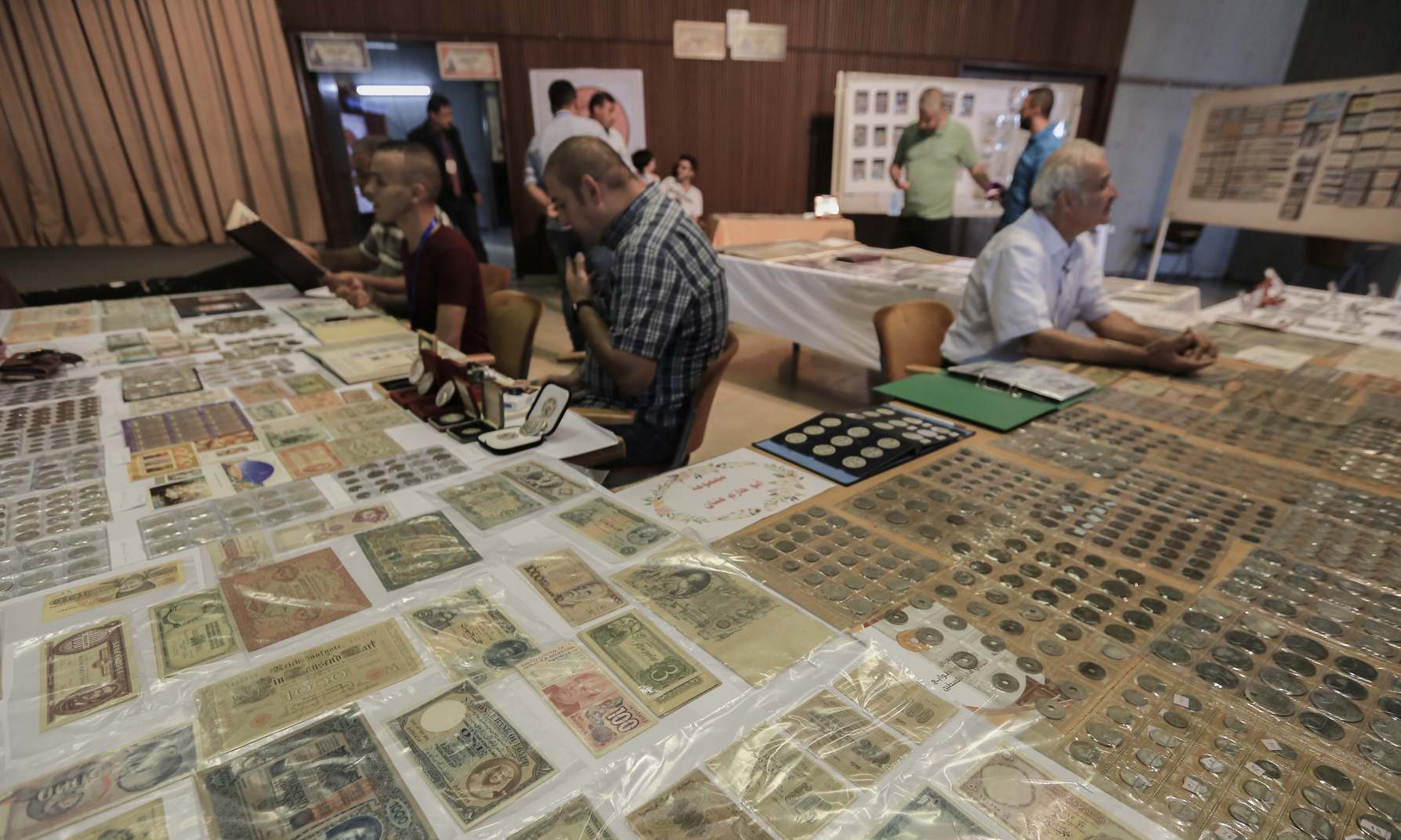











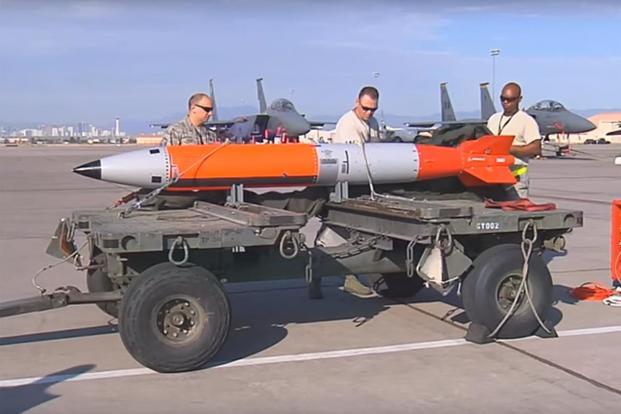
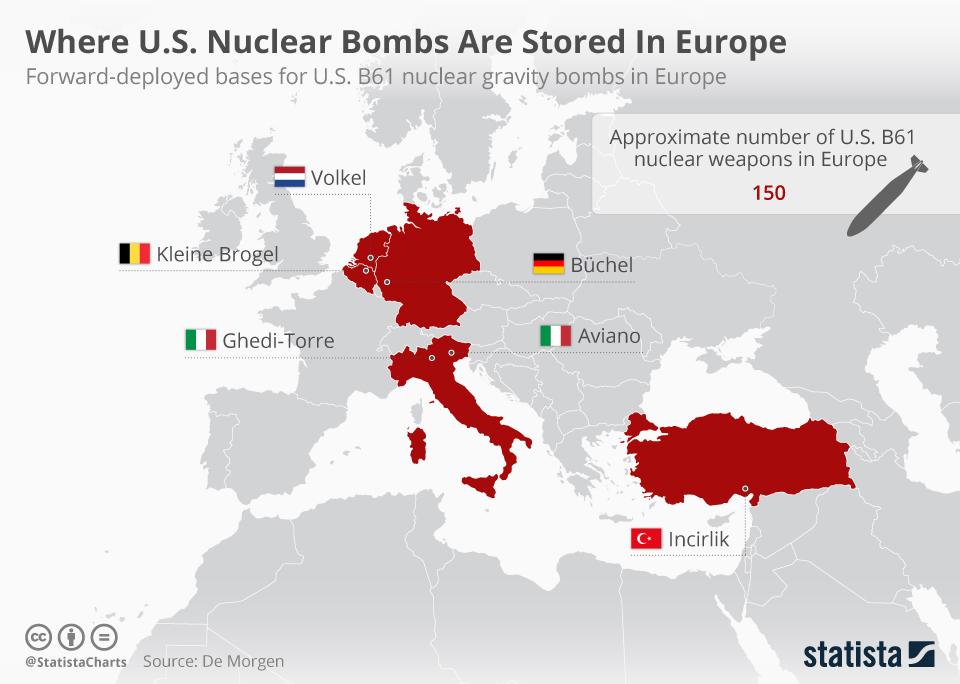
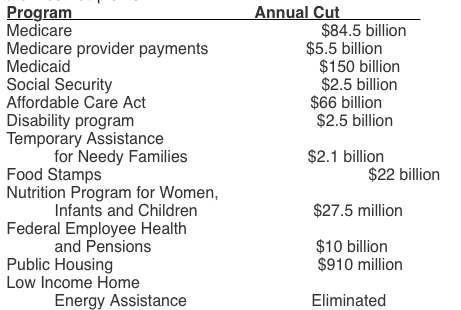
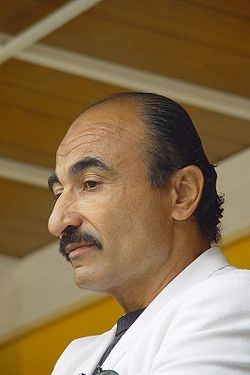


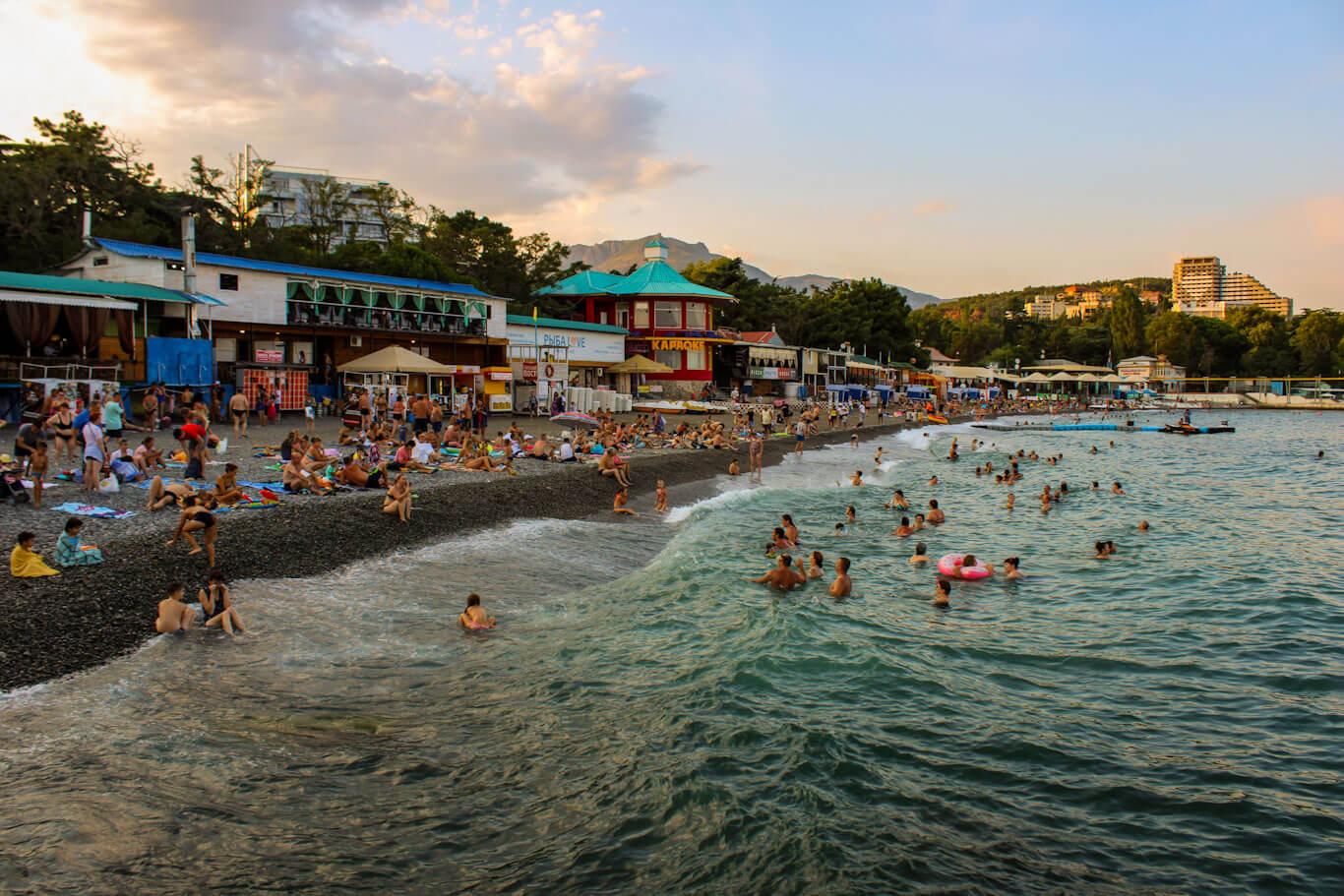
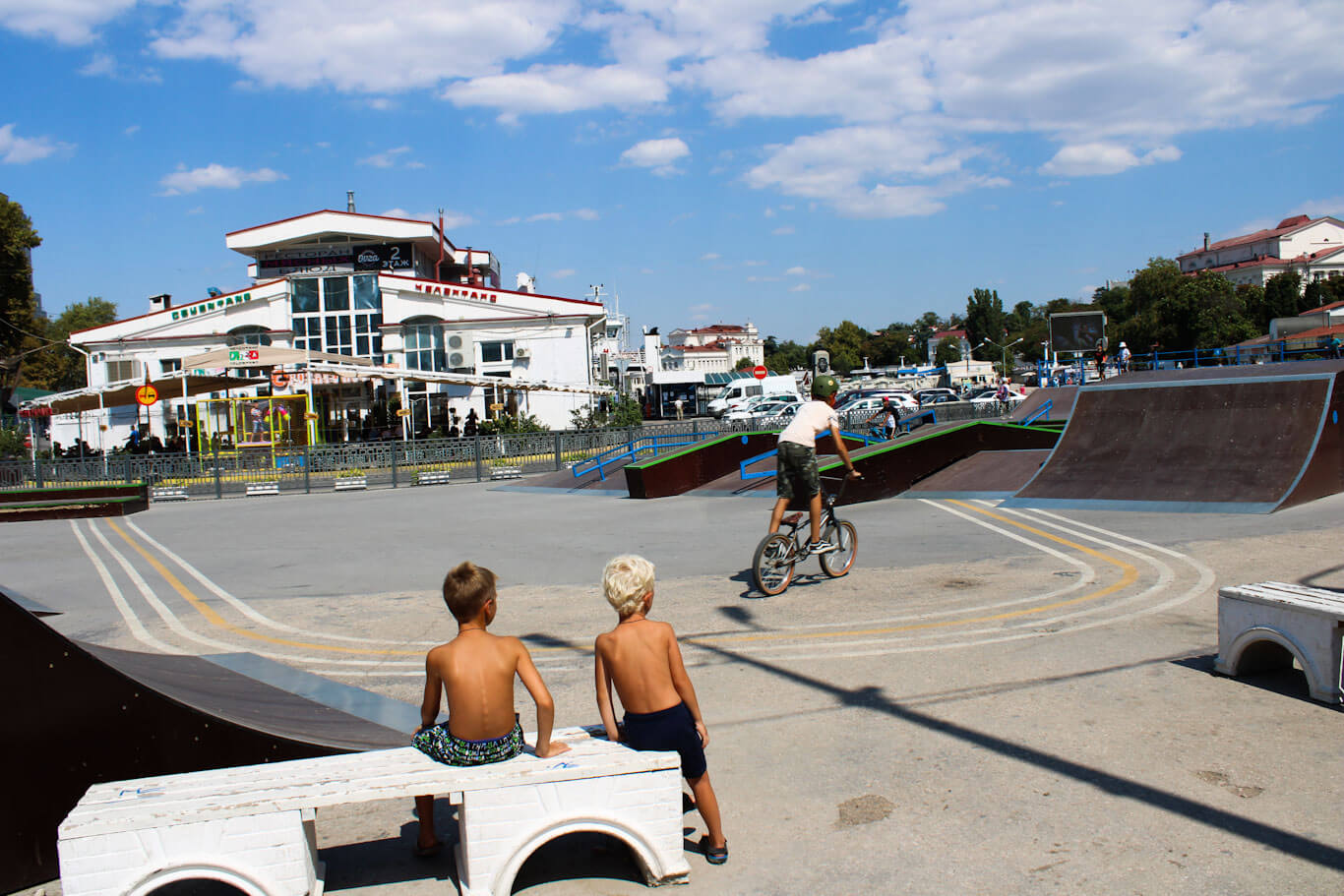
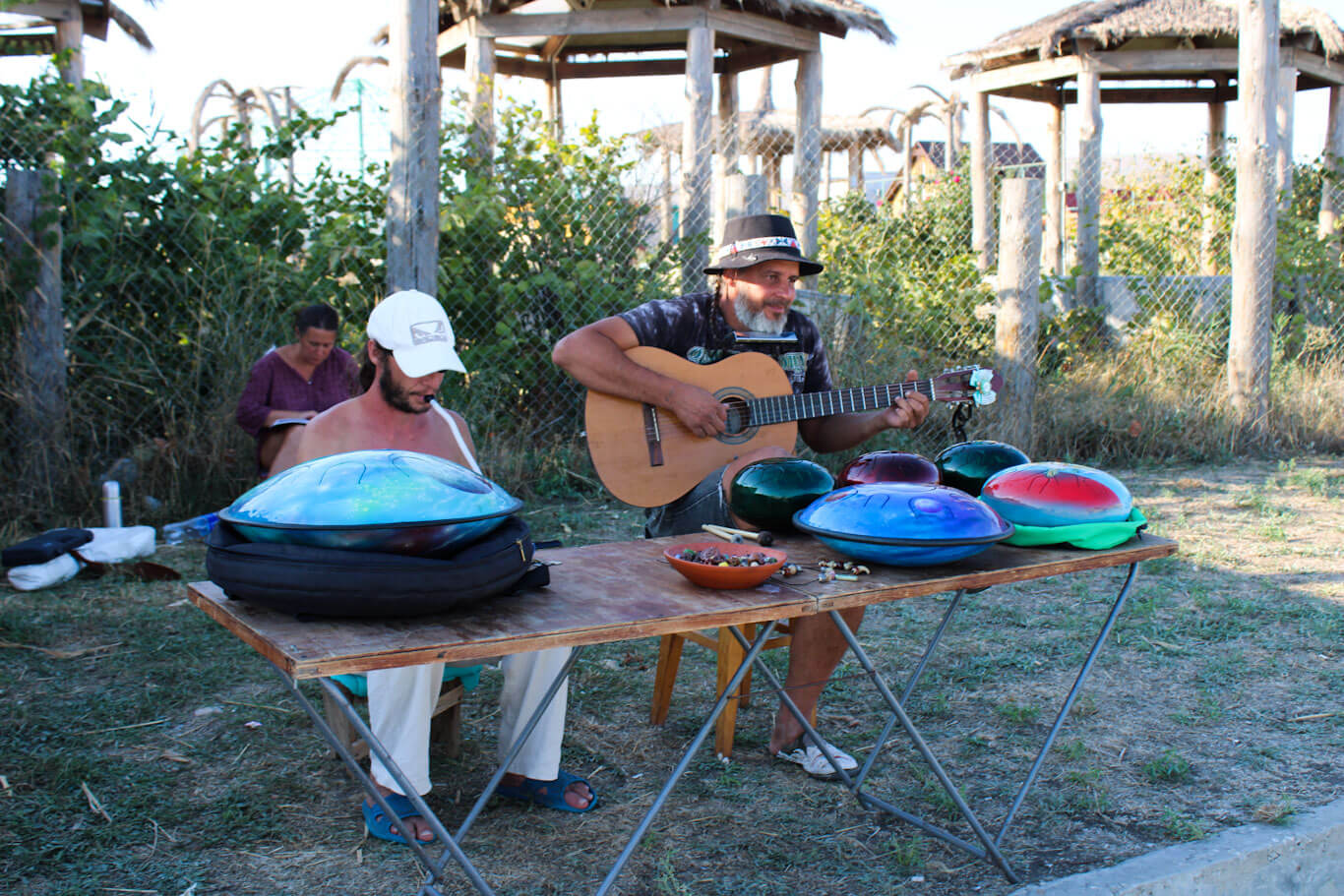
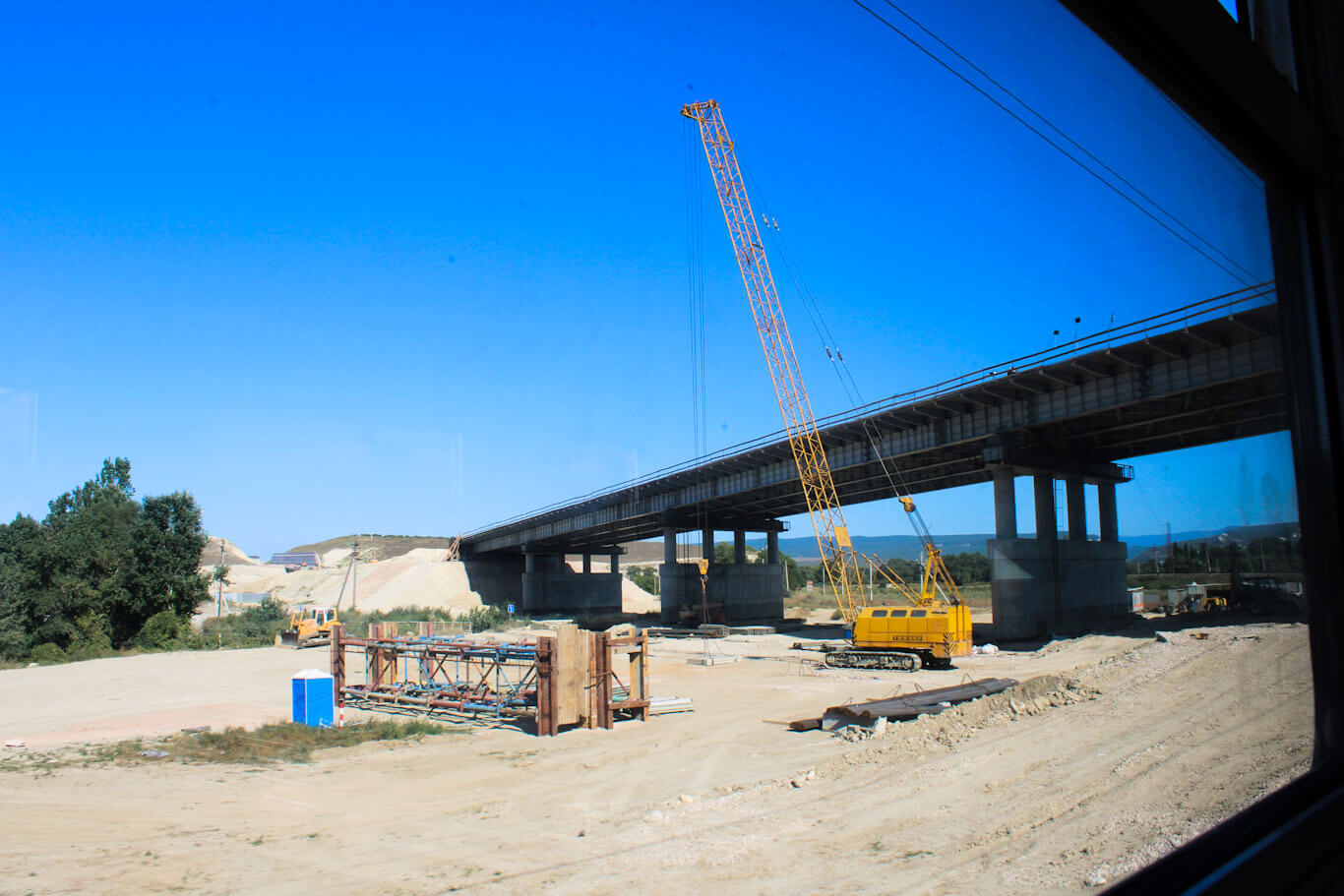
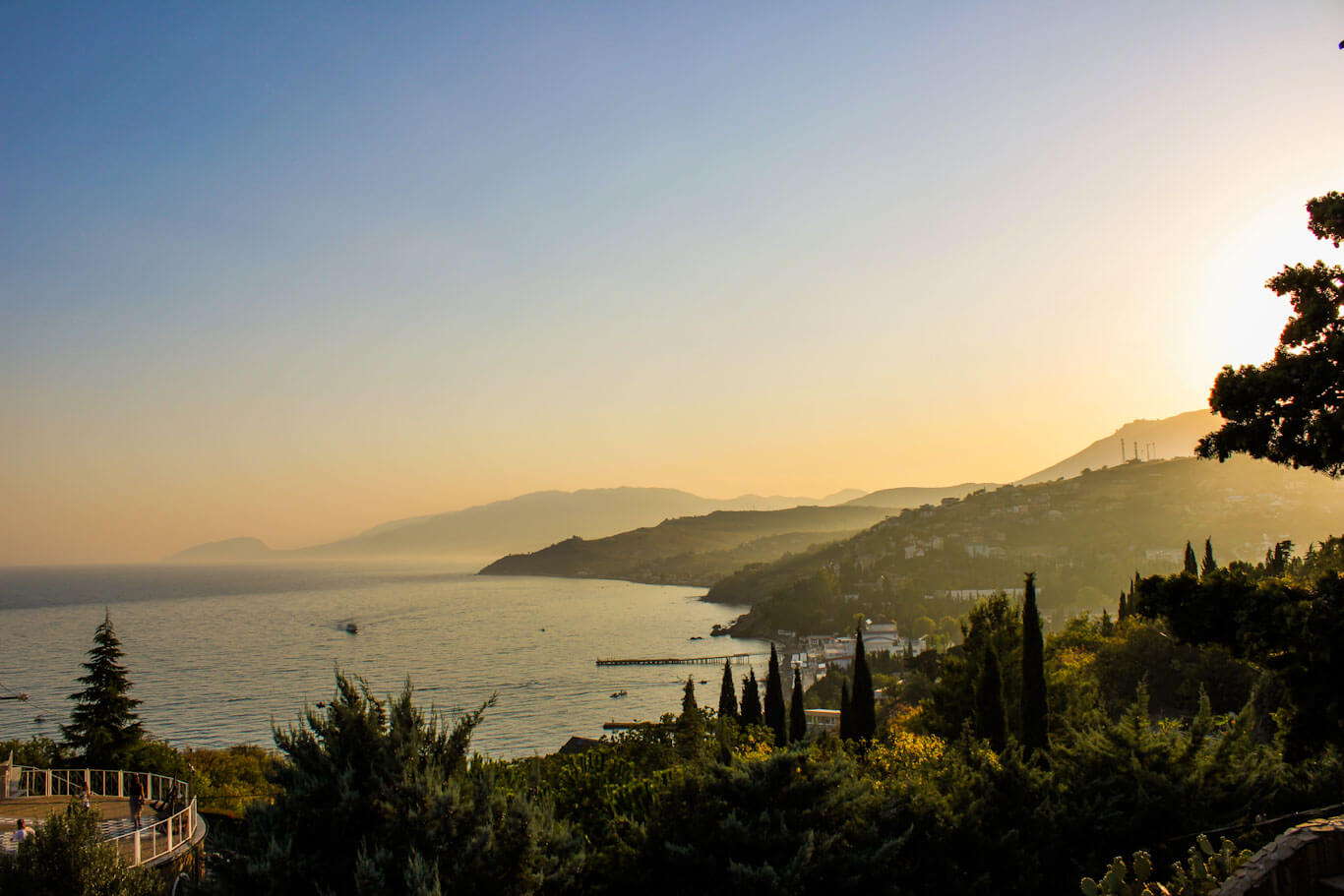
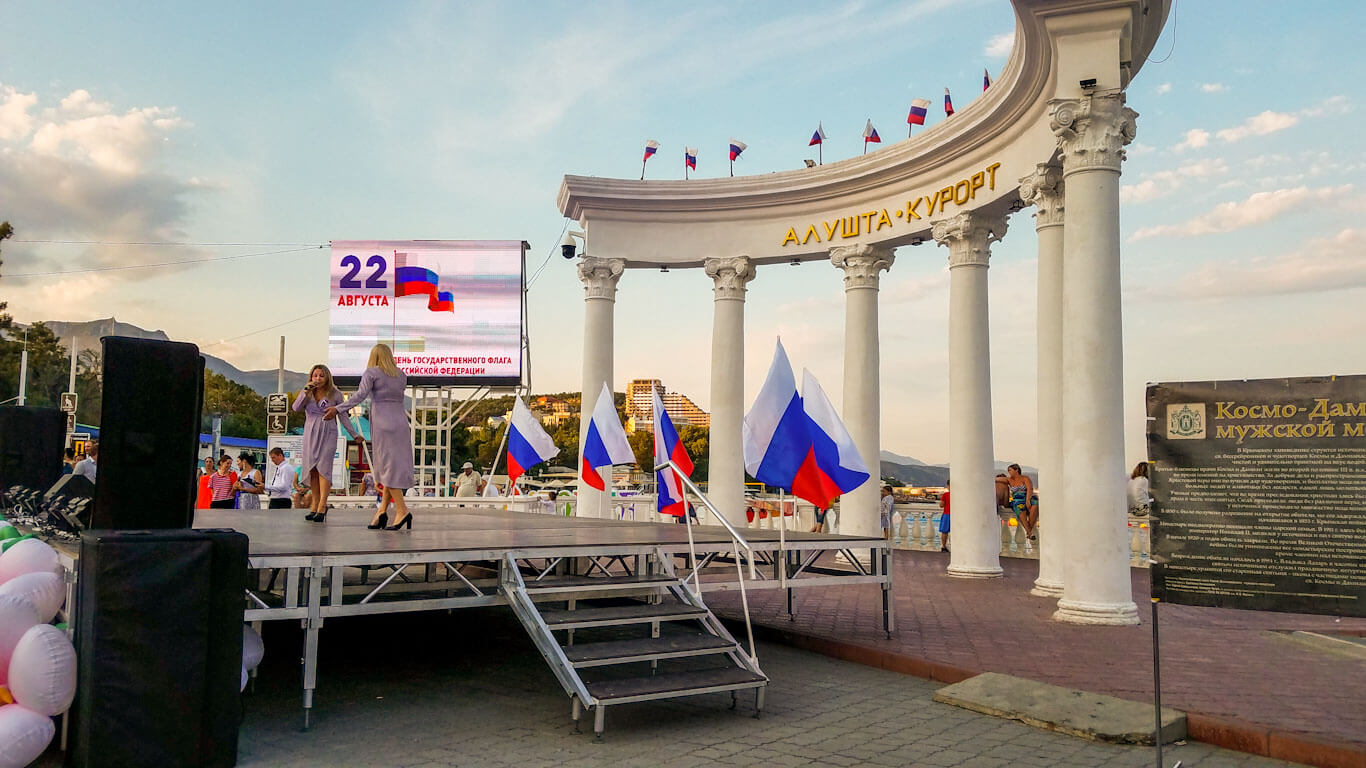
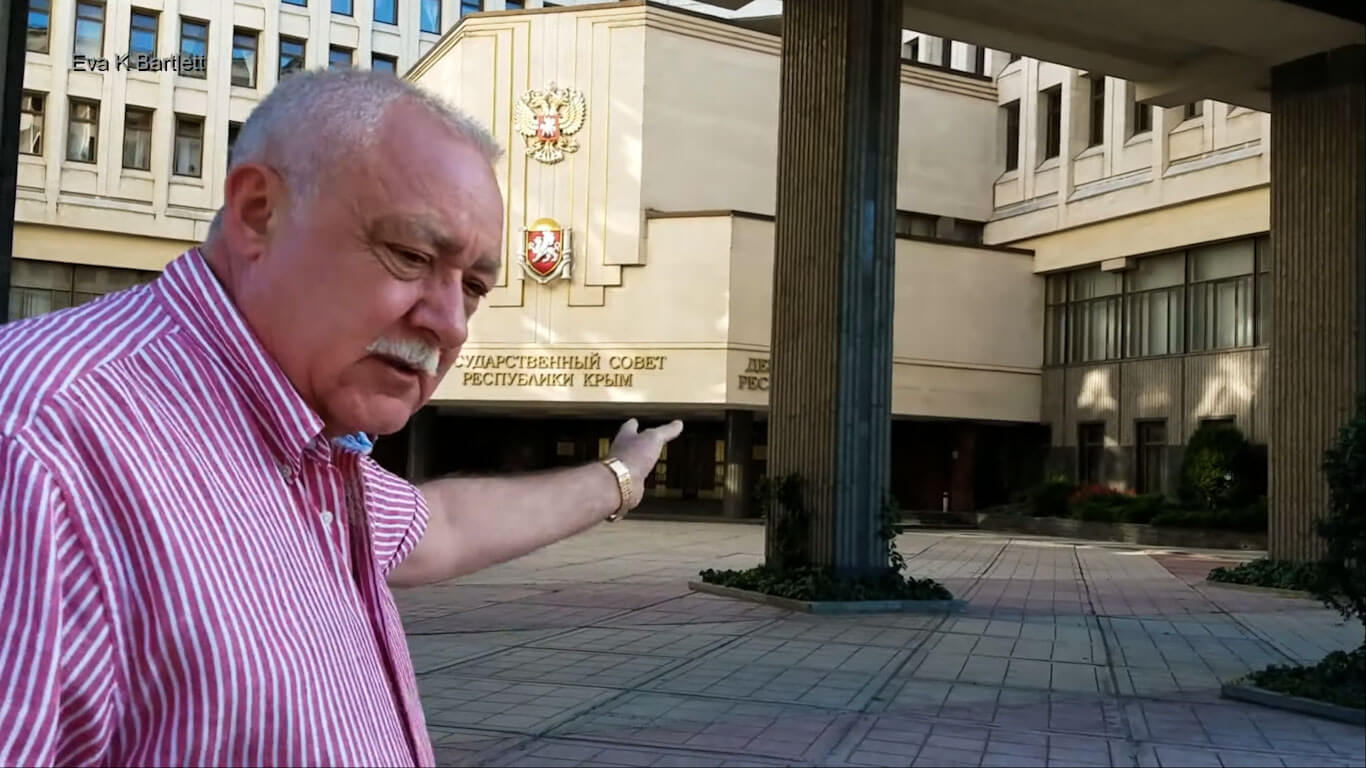
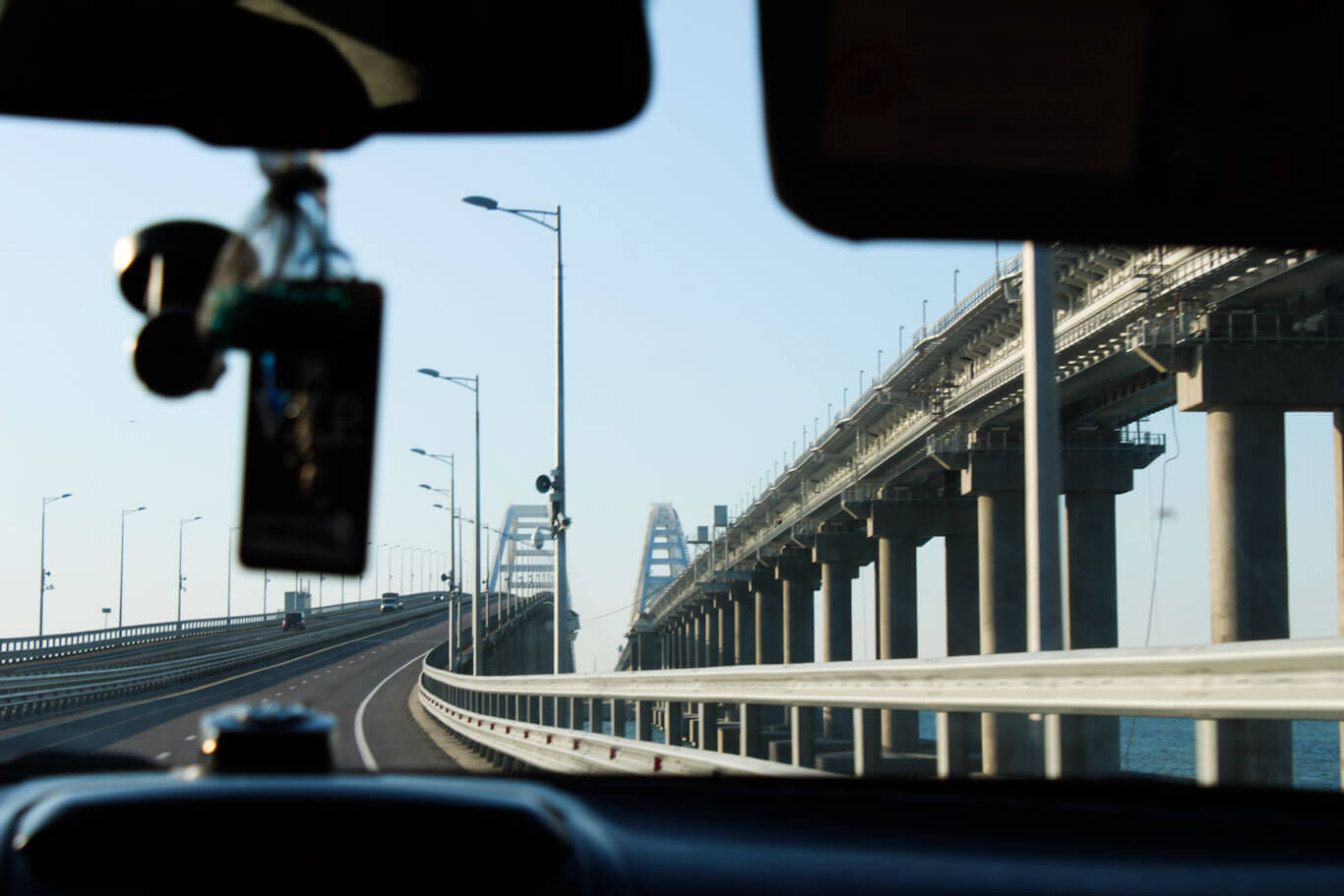





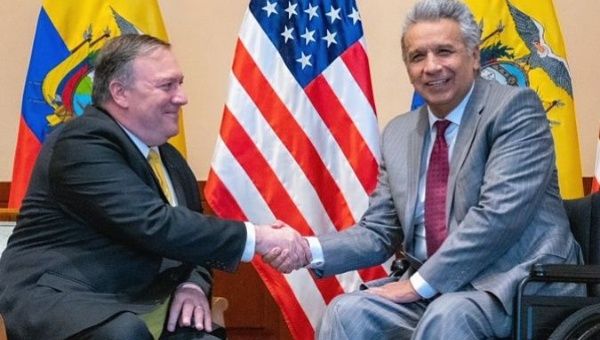
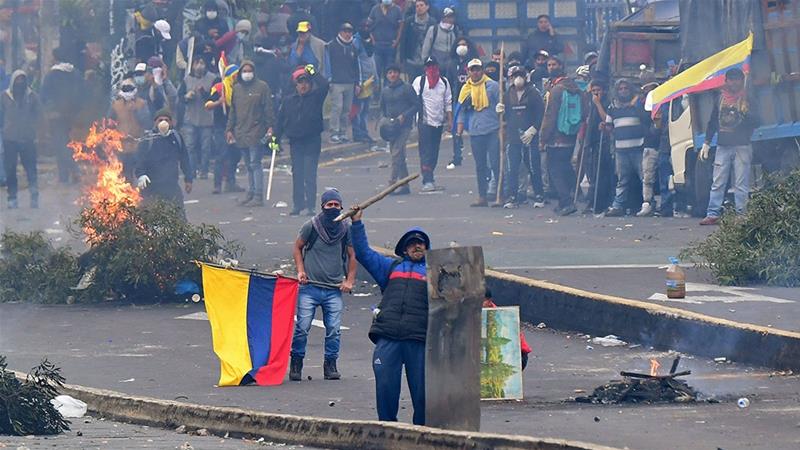
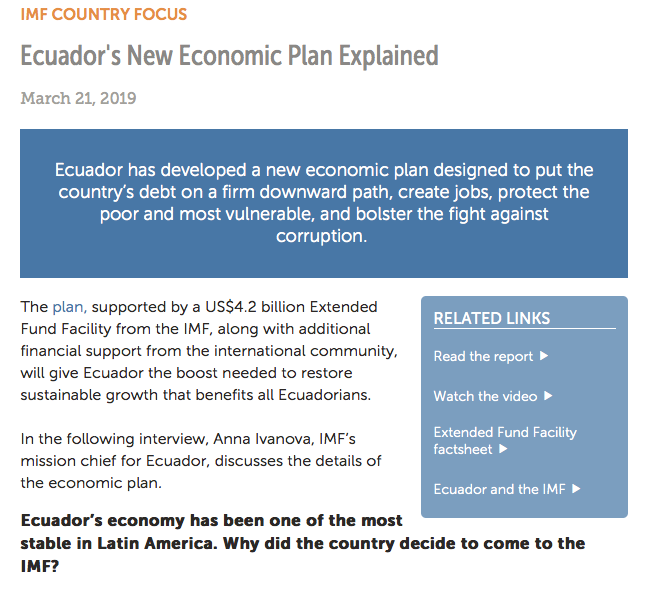

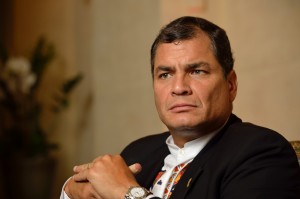
![[:en]Ecuador-Down-Lenin-Moreno[:]](https://i1.wp.com/lavozlit.com/wp-content/uploads/2019/10/Ecuador-Down-Lenin-Moreno.jpg?resize=696%2C395&ssl=1)




































